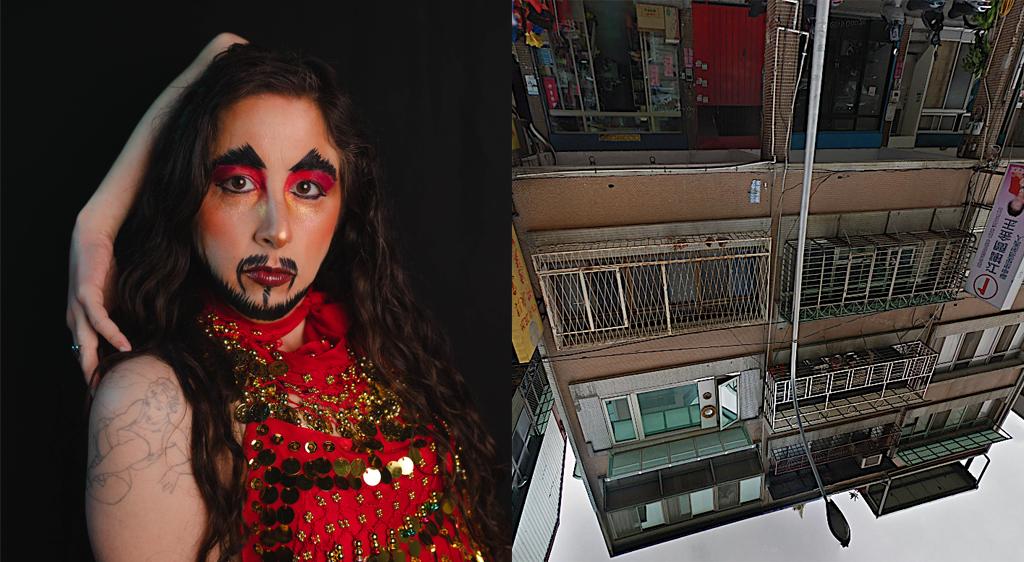Kathak made a man out of me….And a Bird!
by Charlotte Moraga
Gender-bending, gender-blending–This is ardhinariswara. It’s nothing new for a Kathak dancer. We have to explore the depths of extreme masculinity and extreme femininity as we portray different characters and characterization in stories. This kind of role playing requires an artist to get in touch with conflicting feelings and emotions within. What does it mean to be a man? a woman? As a woman, a mother, a grandmother, I found the experience of playing an extremely arrogant and violently relentless man cathartic and liberating. It also made me more sympathetic to macho personalities. It’s not easy keeping up that bravura. One who can find their voice and sing it strongly within tradition is liberated.

Charlotte Moraga as Ravan, Cowell Theatre, Sept. 2009
I just finished up an intense production, Sita Haran, with the Chitresh Das Dance Company where I was blessed to be able to play two males roles, that of the infamously macho and powerful, Ravan, the arch nemesis of Ram of the Ramayana as well as the arrogant and powerful Bali, King of Kishkinda. It required a lot of digging, digging deep, to find that nature within myself. But I was trained in such a way that I could transform myself.

Charlotte Moraga and Rachna Nivas fight as brothers, Bali and Sugreeva. Example of Bhayanaka.
Delving deep into tradition sometimes means breaking barriers and going against tradition. Traditionally, I would not be dancing kathak. Yet, I am. The fact that I am a white woman. (although someone did accuse me of being a confused indian now), a forty-something-year-old white woman. a forty-something year old white woman who had knee surgery just a year and a half ago really goes against tradition of what a kathak dancer usually is.
I have imbibed the art because I have an extraordinary guru who believes that Kathak is not bound by race, creed and culture or gender, who constantly challenges himself and therefore others. By pushing beyond our boundaries, we define who we are in this traditional dance. Yet, it is a classical dance and there are rules and structures that must be maintained and refined. However, Kathak allows for a tremendous amount of creativity in self-expression so I am able to bring my own life experiences to the dance. Kathak has been a journey of self-discovery. It is the notion of journey that attracted me to the idea of telling a story based on a sufi poem for Performing Diaspora.
Performing Diaspora is not about a piece, it is about a journey. It is about a process of growth and new work. My original plan to explore the cyclical nature of creation, preservation and destruction has changed as I have worked with musicians Prasant Radhakrishnan, Salar Nadar and Ben Kunin. As we came together we based our structure on a song that Prasant has composed, adding elements that highlight the dynamic nature of a kathak solo. But rather than go through the different elements and sub-genres within the dance, I have put them all together in one piece. The vandana is removed and the piece basically starts with thaat, a warming up with quick flourishes and stances, then goes into rhythmic play and a few compositions. The storytelling aspect is placed about midway in the same piece with the same music. Traditionally, this would be separated out. The story is also not a traditional story, but based on an allegory, a Sufi poem, “Conference of the Birds”, by Farid Ud-Din Attar.
This twelfth century Sufi mystical poem is about a journey. A bird, a hoopoe, convinces a large group of birds to go on a journey in search of Simorgh, a divine being. The arduous journey is trying, and one by one the birds fall off. In the end, 30 remain and when they finally get to the Simorgh they look and all they see is their own reflection.
The part of the poem I am portraying is the part where the birds give their initial excuses of why they can’t go:
First the love-struck nightingale, which only loves his rose, says he can’t possibly leave the sweet smell of the rose.
Then there is the coy duck which is convinced the purity of his watery home is the only sanctuary he needs. He waddles in his watery home and doesn’t want to leave — the agoraphobe.
The stubborn partridge, a fashionista, whose small bloodshot eyes search for precious stones says he only needs jewels to make him happy.
The hawk, who perches on the arms of kings, enjoys the luxuries of court life and hunting for sport claims that is the grandest desire.
The peacock, a haughty bird, who was created by the painter of the world once dwelt in paradise but befriended a deceptive snake and was subsequently banished only waits to return to his lovely land.
One by one, the hoopoe dismisses their excuses by basically saying that through their shortsightedness and myopic goals, they miss the whole, which is the journey and the process. Their desires are illusions and ultimately will not make them happy.
Which bird am I? All birds and no bird. The challenge is to bring to life distinct characterizations of different birds through the Nava Rasa, the nine emotional states in Classical Indian Dance. There is shringar, which is love, hasya, humour, karuna, pathos, rudra, anger, vira, heroism, bhanyanaka, terror or fear, vibhatsa, disgust, and adbhuta, wonder.
Much like the challenge of showing Ravan and Bali as distinctly different characters, when both have so much in common and are similar in their personality, this will push me to go beyond what has come before. I have chosen just six: the nightingale, the partridge, the duck, the hawk, the peacock and the hoopoe.
What is the relationship between these birds and the thing they love most? How do they let go of that solid tangible thing that makes them comfortable and go on this quest for something intangible? This is kathak, a journey down a path of self-discovery through an exploration of rhythm and emotion.
This is going to be a challenge because it is a poem, and not actually a traditional story, such as the epic Ramayana, Mahabharata or stories of gods defeating demons, such as Krishna slaying the serpent demon Kaliya. They are traditional for a reason. They are timeless in their message, characterization and metaphorical situations.
But this is a poem with mystical associations. It will be easy for me to say, oh this feels good. I like it. Then my guru sees my initial shallow interpretation of a peacock and says, “What is that? a peacock having an orgasm?” I had to laugh. Okay, I say to myself. I must go deeper into the specific character, deeper into the nava rasa, deeper into character qualities that hold us back in life from actualizing ourselves and those around us too. Gurus hold up a mirror for you to look into — discovering your own reflection.
But we also are our own gurus. That is the lesson of this poem, finding the guru within. The day we stop pushing ourselves to reach the perfect moment, that perfect phrase, that right place, is the day we stop growing and the day we stop dancing.
Share This!
More Good Stuff
‘Border / Line خط التماس’ by Jess Semaan and Halim Madi & ‘Sa Ating Ninuno (To Our Ancestors)’ by Kim Requesto December 5-6 & 12-13,
Unsettled/Soiled Group is a group of East, Southeast, and South Asian diasporic movers, makers, and settlers on Ramaytush and Chochenyo Ohlone land. Unsettled/Soiled Group is led by June Yuen Ting, one of CounterPulse's 2022 ARC Performing Diaspora artists and will debut Dwelling for Unsettling alongside VERA!'s Try, Hye!, Thursday through Saturday, December 8-10 & 15-17, 2022
Try, Hye! by Vera Hannush/VERA! & Dwelling for Unsettling by Unsettled/Soiled Group December 8-10 & 15-17, 2022 // 8PM PT // 80 Turk St, SF




Charlotte,
Thanks for bringing us into your investigative and reflective process! Isn’t it crazy that we often think of the avant-garde when “gender-bending” comes into play?? For centuries all over the world, dancers/practitioners have been required to inhabit not only different gender roles, but also those with extreme emotional sagas — like destroyers and villains, macho’s & mothers.
The story about your guru (peacock having an orgasm!) really reminds me of the bottom line (the highest bar?). that we can muse about these ideas — gender, macho, maidens, myth and archetype — but the ultimate goal is to create the poetry and dimensionality in the body (however that is for us right now), through the music, in space & time & blood, sweat, maybe tears. I really got that that was what you were doing, & enjoying!
Didn’t Adia say something similar? —> that whatever the storyline, ideas, intention, “it still has to BUMP!”
keep up the great work y’all!!